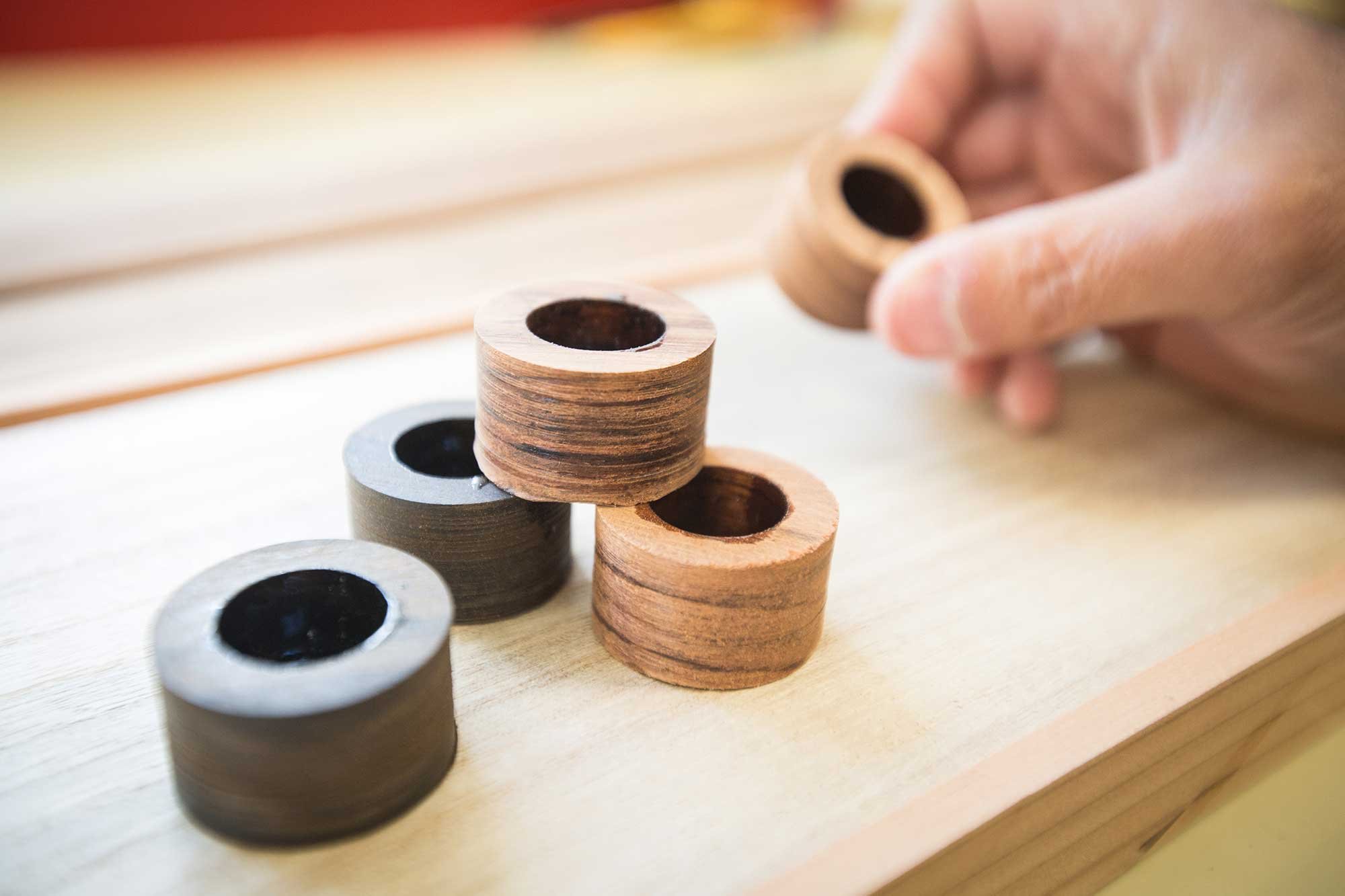“If getting these different types of boards out there can bring attention to alternative ways of making surfboards in a more environmentally sound sense, then I’m happy. I’ve achieved everything I wanted it to.”
— George Yatrakis

George Yatrakis, Against the Grain Handmade Surfboards
Story and photos by Cat Cutillo
Most people go through life hoping to leave their mark, but George Yatrakis is striving to achieve the exact opposite. He launched Pacifica Surfboards two years ago with the goal of creating handmade surfboards that leave no mark on the environment. His environmentally conscious boards are recreations from an ancient surfboard design that dates back a thousand years.
“Conventional surfboards— because of the resins and the polyurethanes and the plastics that they’re made of— are not the greatest things for the environment,” says Yatrakis, who works out of his garage in Pacifica. “The guys who make these are also exposed to a lot of chemicals.”
Yatrakis says when a traditional foam surfboard breaks and is discarded, it won’t biodegrade and eventually ends up in the North Pacific Gyre, which is a plastic island suspended in the the ocean.
“The plastic island in the Pacific is getting a lot of attention these days. It’s not a visible island but it is particles of plastic suspended in the marine layer,” says Yatrakis. “Surfboards might be a minimal part of it but it’s still part of a larger issue of marine plastics.”
Yatrakis says his boards are different because he uses green-material epoxies that are made from nuts instead of plastic or chemical epoxies. He also creates the boards from a completely sustainable wood called Paulownia, which is a farmed wood that grows up to 25 feet in just three years.
“It’s actually the fastest growing tree on the planet and it happens to be ideal for surfboards. It has almost zero environmental impact,” he says. “The leaves are fed to cattle and the sawdust that I generate is great compost. It’s not a toxic wood. It’s much easier on the lungs.”
“There’s nothing about these boards that is bad for the environment,” he says.
Yatrakis says the ancient design was once surfed throughout the Pacific and the size of the board was a reflection of your rank in Hawaiian society. The few surviving examples of these ancient boards can be seen mostly at the Bishop Museum in Hawaii.
“These boards get a lot of attention at the beach. They’re different,” he says.
In fact, some of his buyers never even let them touch the water, instead displaying them as a piece of artwork on their walls. But Yatrakis says the boards are absolutely made to be surfed, and in the right conditions, with smaller waves, will outperform a foam board.
“They are capable of incredible speed because they have almost zero drag. They don’t have a ventral fin—totally flat, finless boards. They can go super fast,” he says. “You’re basically planing on the face of the wave—super maneuverable. You can spin around on these things in the right hands.”
Yatrakis says his boards often appeal to more advanced surfers because they are not as buoyant as a foam board.
“Golfers have a whole bunch of different clubs. You’ve got drivers, irons. I look at this as your 9-iron. You’re not going to use it all the time, but there’s going to be some times when you’re going to want to use it,” he says.
Another bonus is the longevity of his boards.
“Any of these wooden boards will last a lifetime. The magic of wood is that anybody can refinish it. If it gets dinged, it can be steam out. If its broken, you can reshape it—just sand it down, cut it and you can make a shorter board,” says Yatrakis. “If you feel it’s past its lifetime, you can just throw it in the compost bin.”
In contrast, Yatrakis says when the hard plastic shell of a conventional foam board breaks, the board is typically spoiled once the water gets in the shell.
Yatrakis holds a master’s degree in marine affairs from University of Rhode Island and spent years working in marine resource management and marine policy for the state of Maryland, where he focused on the Chesapeake Bay. He began surfing in Puerto Rico, studied boatbuilding at Mystic Seaport in Connecticut and led the sailing team at Skidmore College, racing Olympic class sailboats.
“I apply a lot of boat-building methods to this,” says Yatrakis. “Most conventional boards have a fixed rocker. (With) an alaia, by positioning your feet closer together or spread apart, you can change the rocker of the board. You can achieve reverse rocker. It gives you more surface area and more surface area equals more speed. More surface area will make a boat go faster. The same principals apply to surfboards.”
And perhaps one of the finest selling points for many buyers is that these boards not only have a nostalgic look, they literally bring surfers back to their surfing roots.
“Sometimes you want to get back to the origins of it and remember what it felt like the first time you were on a surfboard—because it’s a thrill,” he says. “I guarantee anyone who has surfed a conventional board, the first time they take out one of my boards it’s that learning curve. It’s like relearning surfing again and that’s kind of fun.”
Yatrakis, who has 30 years of woodworking experience, says he entered the surfboard business as a labor of love.
“I’m in my zone. I work on these boards and I finish with the same feeling I get after a good yoga session.”
Despite the fact that the boards take Yatrakis three weeks to produce, he keeps the price tag low. The Paipos, which are similar to boogie boards, start at $300 and the Alaia’s, which he makes in different sizes between six feet and eight feet, start at $700.
“If nothing else, if getting these different types of boards out there can bring attention to alternative ways of making surfboards in a more environmentally sound sense, then I’m happy,” Yatrakis says. “I’ve achieved everything I wanted it to.”
Visit www.pacificaboards.com to learn more.





